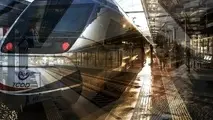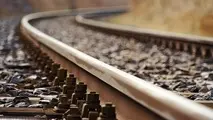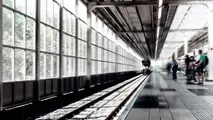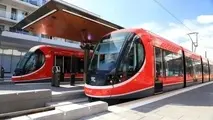Net-zero rail mobility by 2050: three lessons from the IRS
During the International Railway Summit’s ‘Achieving net-zero mobility by 2050’ panel, industry experts discussed how rail will play a pivotal role in the transition to net-zero emissions. Here are three lessons we learnt from the event.

During the International Railway Summit’s ‘Achieving net-zero mobility by 2050’ panel, industry experts discussed how rail will play a pivotal role in the transition to net-zero emissions. Here are three lessons we learnt from the event.
The 10th International Railway Summit (IRS) was held between 23 and 26 February and saw industry stakeholders and experts discuss the impact of Covid-19 on the sector, as well as the future of an industry that still faces big challenges such as decarbonisation.
The ‘Achieving net-zero mobility by 2050: actions to take right now’ panel saw experts – including European Commission transport commissioner Adina Vălean and International Union of Railways (UIC) director-general François Davenne – discuss what part railways will play in transitioning to net-zero, achieving the climate targets set by the EU.
Here is what we learnt.
1. Rail will play a central role in the green revolution
According to European Commission transport commissioner Adina Vălean, rail will be pivotal in achieving net-zero railway mobility.
“My objective this year is to see rail become the driving force it once was,” Vălean said during the panel. “This traditional transport mode, enabler of the Industrial Revolution, could now play a central role in yet another fundamental transformation, one that will lead us to a sustainable and emission-free transport system.”
To support this transition, explained Vălean, initiatives were taken at a European level.
The European Parliament and Council declared 2021 the European Year of Rail, a year after the launch of the European Green Deal and a few months after the Commission approved the Sustainable and Smart Mobility Strategy – a series of European transport policies for the next four years as well as targets set for 2030, 2035 and 2050.
“Rail is an unsung hero of clean and efficient transport and our objectives, as outlined in our strategy, are to increase rail freight by 50% and to double high-speed rail by 2030,” Vălean said.
Despite everything, Vălean admitted, rail still needs a lot of investment, especially in showing shippers that rail is a fast and reliable alternative to road, therefore improving multi-modality.
“We must also address missing links to improve multimodality and truly see an integrated transport system,” she added. “We cannot move cargo from boats to trains if the port is not well connected with railway infrastructure.”
Projects such as Rail Baltica – which will connect the Baltic countries to the rest of Europe by 870km of infrastructure – are expected to fill that gap.
“With the EU providing 85% of current investment and having so far committed over €800m, Rail Baltica is one of the EU’s largest transport infrastructure projects,” she continued.
Another link, the Basque Country to Bordeaux route, is currently underused, with trains carrying only 3% of freight. The new project is set to turn usage around trough the creation of high-speed links, creating a ripple effect beyond the sector.
“Rail needs well-developed and well-maintained physical infrastructure and modern rolling stock, which is expensive,” Vălean said. “But [if] we want a better return on investment, we need to add a digital layer, rail must modernise through digitalisation and innovation.”
Rail that supports green recovery is the backbone of sustainable mobility
The Covid-19 pandemic has changed the way we think about the future, highlighting how the world’s interconnected economies and global societies are much more vulnerable to shocks.
As explained by UIC director-general François Davenne, Covid-19 will not be the last shock we will experience and therefore the railway sector will need to improve its resilience and sense of urgency.
“[Developing resilience and a sense of urgency] is absolutely crucial for us because we think that the railway should become the backbone of sustainable mobility,” Davenne said during his presentation.
To become the backbone of sustainable mobility, rail needs to increase its internal efficiency as well as increase its capacity to interact with other modes of transport, implementing the “good neighbour” policy, which aims to stabilise neighbouring countries through transport, among other things.
Technologies – including digitalisation, 5G, automation and AI – will enable the network to become cleverer and, if implemented rapidly, could change the face of transport.
Becoming the backbone of sustainable mobility also means interconnection with other modes of transport. “I think the sector is actively working to [give] end-users, both passenger and trade, seamless access to a portfolio of sustainable mobility,” Davenne added.
“We are working very hard to unify the different digital platforms that are existing today to have a single European digital platform that will also be able to interconnect.”
The industry, Davenne continued, needs to make modal shift desirable, contributing to change the public’s perception of rail and public transport, highlighting how its frugality and resilience during the Covid-19 pandemic.
“We are now to associate [railway] with words such as flexibility, simplicity and liberty,” he continued.
The current Covid-19 pandemic as well as global warming have shown the system’s fragility, pushing the railway industry to implement changes now, choosing the most rapid and efficient ways to move forward.
“At the end of the day, what we have to do in this difficult period is to finance at a regional and global level transformational projects, which will have the biggest impact in the short run.”
Technology is a vital part of railway’s transformation
“We need to find a solution that not only reduces CO2 but at the same time we need a solution that allows affordable, clean and seamless transportation to all people because transportation cannot be something for only a few fortunate ones but the backbone of developing the wealth and standards of living we are enjoying in Europe,” said Siemens Mobility CEO Michael Peter.
To bring this change and connect cities with each other and across borders, explained Peter, digitalisation will be a vital part of the solution, quickly increasing the capacity of existing infrastructure.
“We also need solutions that attract people as we want to pull people into trains, we can’t push them into this mode of transportation,” he added. “So [trains] need to be comfortable and need to use much less energy and operating with less noise emission [whilst having] a high availability.”
“Last but not least, [we need to make trains] easy to use, [for example] buy tickets that can cover several modes of transportation, also crossing borders.”



